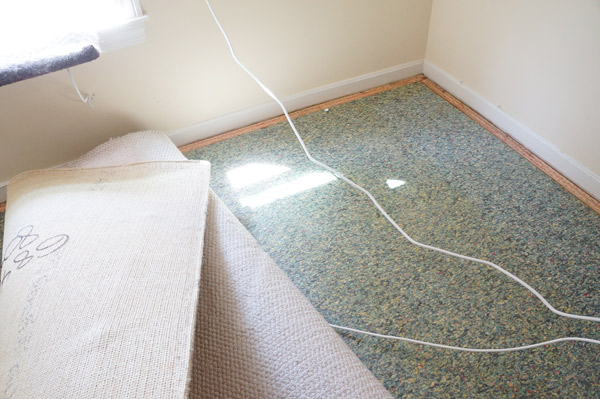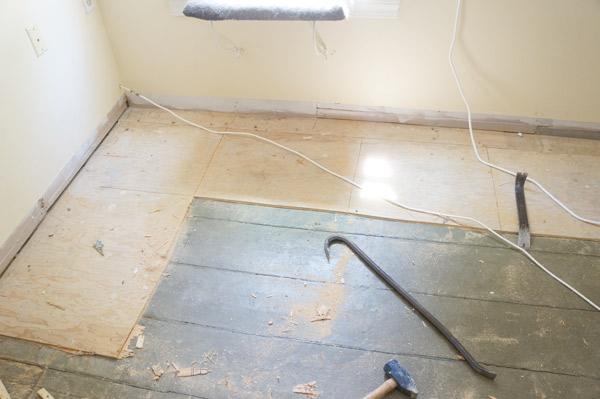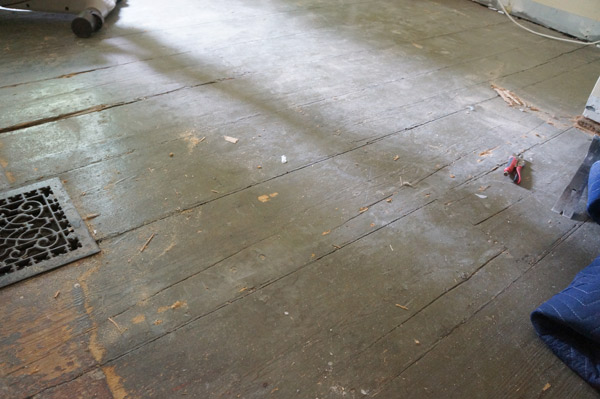Keeping projects that I'm working on under wraps is not my forte. If you follow me on social media, you have more than an inkling what I've been up to the past few days. Hint: it has to do with floors.

After 4 1/2 long years of grumbling about the wall to wall carpet in our upstairs rooms, we're finally doing something about it! I'm not the biggest wall to wall carpet fan. It has it's place sometimes, but in general it kinda weirds me out. No matter how much you clean or vacuum it, it absorbs dust and, stains and dirt from the houses previous owners still linger. Especially when you have a textured loop like was in my office and the hallway- it was like velcro for dirt. Ick.
I'd much prefer to live with hard wood floors with area rugs. Not only are area rugs MUCH easier to give a deep clean to, they're also much easier to switch out when you want to give a new look to the space. *steps off soap box*
In the past I've always tried to show you as little of the upstairs carpet as possible. Between the bedroom, hallway, and 2 tiny offices, there was 3 different beige stained carpets that we planned to do away with from the moment we put an offer in on the house. Some stains we inherited with the house, others are from a cat with a very sensitive tummy who also enjoyed using the carpet as a scratcher. He's lucky he's cute and fluffly.
But back to the floor. Probably 50 years ago, the then owners decided it would be a great idea to put plywood and then the carpet pad and carpet over the original wide plank pine boards. Silly homeowners.
It's looking pretty promising that we'll be able to save the original 115 year old wide plank pine and as you can imagine, I'm cautiously giddy. I still have to finish pulling up carpet AND plywood in Hubby's office and our bedroom, so I'll be keeping my fingers crossed until then.
I'm also super excited because the floors finally getting woodified (totally a word...) is going to be a catalyst for mini make-overs in all of these rooms. I've already got paint swatches in hand! Who doesn't love a room make-over?

















